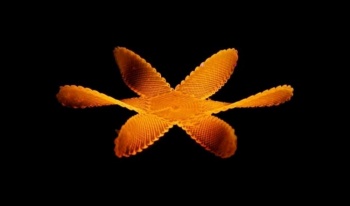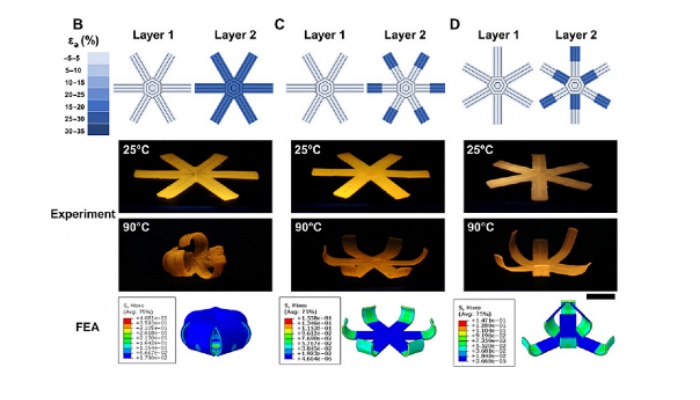
Material scientists from the University of California San Diego have developed liquid crystal material that can shift its form. Researchers demonstrated that by controlling the printing temperature of liquid crystal elastomer, or LCE, it is possible to control the material’s degree of stiffness and ability to contract. This material flexibility is also known as degree of actuation. Interestingly, the UCSD team was also able to change the stiffness of different areas in the same material by exposing it to heat. This advancement in the field of 3D printing will make it easier to manufacture and control the shape of soft robots, artificial muscles and wearable devices.
UC San Diego scientists are not the first ones to unveal a new shape shift material this year. Not so long ago, researchers from Harvard used keratin extracted from wool to develop a biocompatible 3D printed shape shift material. In the case of UCSD however, it is not a keratin-based material but a liquid crystal elastomer. As a proof of concept, the team 3D printed in a single print, with a single ink, structures whose stiffness and actuation varied by orders of magnitude, from zero to 30 percent. For instance, one area of the LCE structure could contract like muscles, while another part of it was flexible like tendons.

Researchers were inspired to create this material with different degrees of actuation by examples in biology and nature. In addition to the combination of muscle and tendon, researchers took cues from the beak of the squid, which is extremely stiff at the tip but much softer and malleable where it is connected to the mouth of the squid. The team was led by Shengqiang Cai, a professor in the Department of Mechanical and Aerospace Engineering at the UC San Diego Jacobs School of Engineering. Zijun Wang, the paper’s first author and a Ph.D. student in Cai’s research group, said “3D printing is a great tool to make so many different things—and it’s even better now that we can print structures that can contract and stiffen as desired under a certain stimuli, in this case, heat“.
The researchers 3D printed a liquid crystal elastomer disk at 40° C (104 F) and heated it up to 90° C (194 F) in hot water. The disk deformed into a conical shape. But an LCE disk composed of areas that are printed at different temperatures (40, then 80, then 120 degrees Celsius), deformed in a completely different shape when heated up. The actuation of the material could be activated not just in hot water but also by infusing LCE with heat-sensitive particles or particles that absorb light and convert it to heat. Now, the researchers will working on modifying the ink so the printed structures can be self-repairable, reprogrammable, and recyclable.


